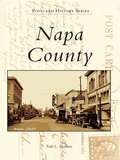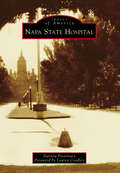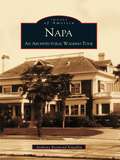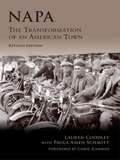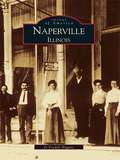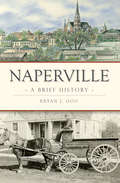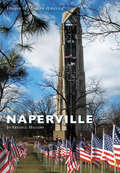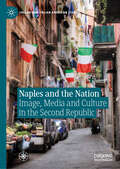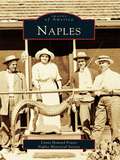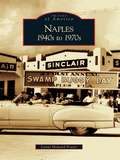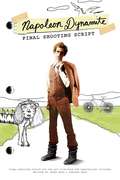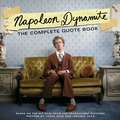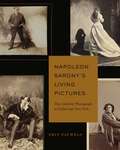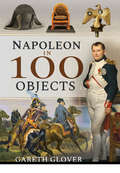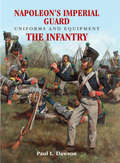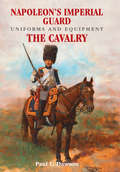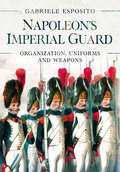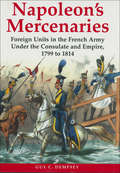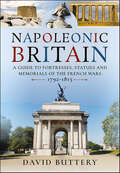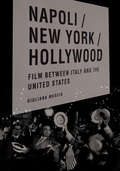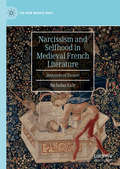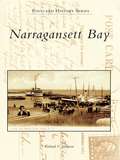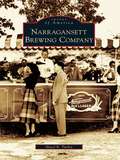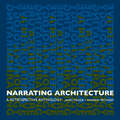- Table View
- List View
Napa County
by Todd L. ShulmanThe rich history of Napa County spans from the first indigenous American Indians through the Spanish mission period; from the first pioneer white settlers and Gold Rush forty-niners, to the agricultural and viticulture gold rush, and into the tourist destination it is today. As soon as postcards came into being, the enterprising business and resort owners in Napa County began using them to advertise and promote Napa as a destination resort. It is through these windows into the past, sent across the country and the world by visitors and residents alike, that we get a glimpse into life in the Napa Valley during the last century.
Napa State Hospital
by Lauren Coodley Patricia PrestinaryNapa, because of its natural beauty and optimal conditions for "moral treatment," was chosen as the second site for a state hospital to ease overcrowding in Stockton Asylum. When the fully self-sustaining Napa Asylum opened in 1875, it quickly filled to capacity and became home to many people suffering from mental illness, alcoholism, grief, and depression. In 1924, Napa Asylum was renamed Napa State Hospital to reflect changes in the medical model and treatments for psychiatric patients. Covering the first 100 years of the hospital's history, this unique book tells the story of the institution and the people for whom it served as employer. Known locally as Imola, this beautiful site became an integral part of the community.
Napa: An Architectural Walking Tour
by Anthony Raymond KilgallinThough world-famous for its miles of superior vineyards, Napa offers much more to the historian than its reputation as wine maker. Just an hour from San Francisco and Sacramento, the many towns of the Napa region are small enough to be walkable, friendly, and unique in design. The 240 images in this new book, with some photographs never before collected, demonstrate the architectural and historical diversity of this beautiful region, presented in walking-tour format. Through vintage photographs, the reader is pulled back in time to 1880 Napa, where a scant but diverse 4,000 residents reside. Of those people, only 163 were actually born in California, which accounts for the variety of architectural styles throughout the county. The multinational heritages of Irish, German, English, Canadian, Swiss, Scottish, French, Swedish, Mexican, Italian, and Chinese settlers are richly expressed through the architecture and landmarks of Napa's villages and towns. Captured here are the homes and structures that give the region its glow, including Napa's Churchill Manor, Greystone Winery in St. Helena, Magnolia Hotel in Yountville, and Stags Leap manor in the heart of the Stags Leap District.
Napa: The Transformation of an American Town
by Lauren Coodley Carol Kammen Paula Amen SchmittWith roots set deep in California history, Napa's story reaches back to the Bear Flag Rebellion and earlier, to the first contact between Spanish explorers and the Wappo Indians. Through the founding of Spanish missions and the grants of ranchos by the Mexican government, Napa flourished under the various cultures that helped it become one of the west coast's most dynamic cities. As it bloomed into one of the most recognizable names on the American landscape, Napa's residents confronted issues of war and peace, of open space and sprawl.
Naperville, Illinois
by Jo Fredell HigginsThe remarkable city of Naperville, Illinois, began as an agrarian community in the mid-1800s. The rich prairie filled the grain elevators and cattle were shipped to the Chicago "Yards." Through the medium of historic photographs, this book captures the evolution of the people of Naperville, from the mid-1800s to the present day. These pages bring to life the people, events, communities, and industries that helped to shape and transform Naperville. With more than 200 vintage images, Naperville, Illinois, portrays a community that is both idyllic and contemporary. This book takes readers back to Naperville's simpler days, and provides a glimpse as to how this community grew into a new mecca. Business and commerce thrive, the schools offer quality education, city services are national award-winning, cultural activities are diverse and plentiful, and traditions blend easily with the future.
Naperville: A Brief History (Brief History)
by Bryan J. OggSince Naperville sprang from the northern Illinois prairie, it has maintained an unmistakably fascinating heritage. The settlers who followed the Napers to the DuPage River had to endure the hardships of felling trees and plowing prairies to make a place to call home. The campuses of the Research and Technology corridor might seem pretty far removed from the travails of those early years, but both are part of the same determined community. That shared tradition holds surprises even for lifelong residents of Naperville, such as the location of the Stenger Brewery or the legacy of Peter Kroehler, furniture tycoon, mayor and philanthropist. Bryan Ogg takes stock of the unique people and memorable events that shaped Naperville from its humble founding through its current thriving state.
Naperville: Illinois (Images of Modern America)
by Jo Fredell HigginsNaperville is a quintessential American city, where many cultures blend together in harmony. Founded in 1831 by Capt. Joseph Naper and incorporated in 1857, the city has progressed from rural farmland to a robust commercial economy. In 1860, kerosene lamps and one wooden bridge were surrounded by the sounds of prairie fowl and croaking frogs. In 1960, the population exploded. Now, 21 languages are spoken in the community, and the meandering downtown Naperville Riverwalk offers bucolic serenity to those strolling along the Century Walk artwork. Naperville has two partner Sister Cities that strengthen culture and business: Nitra, Slovakia (as of 1993), and Pátzcuaro, Mexico (as of 2010). The city comes alive thanks to its people and families, organizations, leaders, and events. It is filled with a rich culture that values the history of yesterday while looking forward to tomorrow’s joys. Naperville is simply outstanding in every manner and mode of living.
Naples and the Nation: Image, Media and Culture in the Second Republic (Italian and Italian American Studies)
by Ruth GlynnThis book addresses Naples’ relationship with Italy, since the introduction of direct mayoral election in 1993 and as articulated in cultural production. It deploys theoretical frameworks pertaining to postcolonialism and cultural accentedness to challenge the historical framing of Naples as Italy’s internal ‘other’ and to reposition the city at the very heart of the Italian cultural imaginary. The book showcases the breadth of texts and media addressing the city-nation relationship, analysing less renowned works of journalism, literature, fashion and film alongside celebrated texts such as Roberto Saviano’s Gomorra, Elena Ferrante’s ‘Neapolitan Novels’ and the soap opera Un posto al sole. It highlights how such works contest perceptions of Naples as diverging from a national norm by emphasising the continuities that align the city with the nation. Though developed with the specificities of Naples in mind, the approach is intended as a model for the study of city-nation relations in other cultural contexts.
Naples: 1940s To 1970s (Images of America)
by Lynne Howard Frazer Naples Historical SocietyNaples celebrates the story of one of southwest Florida's most renowned beach resorts, from its tenuous beginning in 1885 through the tumultuous year of 1960, when Hurricane Donna nearly destroyed the town once hailed as the "Summerland in Wintertime." Founded as a place where "invalids can escape the chilling blasts of winter," the distant paradise was accessible only by boat, and by 1890, the new town boasted a pier, the Naples Hotel-and little else. With train service arriving in Naples in 1927 and the opening of the Tamiami Trail in 1928, the once-remote resort was finally open to development, but the Depression turned the dreamed-of boom into a bust until after World War II. The picture-perfect beaches and warm winter climate were soon "rediscovered," and by the time Hurricane Donna stormed ashore on September 10, 1960, Naples was the fastest-growing city in Collier County.
Naples: 1940s to 1970s (Images of America)
by Lynne Howard FrazerNaples was not much more than a bend in the road in the 1940s, but by 1950, its beautiful beaches and balmy weather had been rediscovered, and development and tourism became the city's lifeblood. Although Hurricane Donna struck Naples in 1960, the building boom continued, and by the late 1970s, few undeveloped areas remained. The last large gulf-front parcel was acquired in 1972 for the development of a new luxury community called Pelican Bay. More than 200 images offer insight into this rarely chronicled period of Naples's history, including seldom-seen historic photographs from the archives of the Naples Daily News (formerly the Collier County News) and vintage postcards from the collection of Nina Heald Webber.
Napoleon Dynamite
by Jared Hess Jerusha HessA true twenty-first-century hero, Napoleon Dynamite is awesome at drawing ligers, hunting wolverines, and playing tetherball. He also has some sweet dance moves. His friends have some pretty good skills too -- Pedro has a Huffy Sledgehammer and a mustache, and Deb makes the best boondoggle key chains in town. Sure, Uncle Rico tries to ruin Napoleon's life and makes him look like a freakin' idiot, but even if Napoleon's just had the worst day of his life, tomorrow he can get up and do whatever he feels like he wants to do. Gosh!
Napoleon Dynamite: The Complete Quote Book
by Twentieth Century FoxPulled from the hit film that made a hero out of a tetherball-loving guy with glasses and stellar dance moves, the words, phrases, and speeches in Napoleon Dynamite: The Complete Quote Book capture the hilarious dialogue that worked its way into the hearts and mouths of millions of fans. Quirky, comical, and yet somehow perfect for any situation, the lines included here are sure to inspire exasperated sighs, bizarre conversations, and awkward exchanges in homes, high schools, and workplaces across the country. Sweet.
Napoleon Sarony’s Living Pictures: The Celebrity Photograph in Gilded Age New York
by Erin PauwelsNapoleon Sarony was once one of the most famous names in American photography. During the Gilded Age, his grand portrait studio with its one-story-high marquee reproducing the photographer’s signature in golden letters was a New York City landmark visited by celebrities such as Oscar Wilde, Sarah Bernhardt, and Mark Twain. Sarony’s story represents a central chapter in the history of photography. Napoleon Sarony’s Living Pictures documents Sarony’s career as New York City’s premier portrait photographer and details a moment when the birth of celebrity culture and growth of mass media helped promote popular acceptance of photography as fine art.Sarony’s larger-than-life public image was crucial to demonstrating photography’s creative potential. At a time when photographers were commonly regarded as straitlaced entrepreneurs or technicians, Sarony circulated self-portraits in outlandish costumes to assert himself as a flamboyantly eccentric artist. These photographic performances forged an authoritative link between the so-called father of artistic photography in America and the stylish celebrity portraits that emerged from his studio by the tens of thousands. Reconstructing Sarony’s biography and bringing to light never-before-published portraits, Erin Pauwels provides an illuminating view of how one artist’s quest for creative recognition fueled the rise of celebrity culture and artistic photography in the United States. This book will appeal to historians of photography and nineteenth-century American visual culture, as well as anyone interested in this master of the medium of photography and his celebrity subjects.
Napoleon in 100 Objects (In 100 Objects Ser.)
by Gareth Glover“Takes a look at the life of Napoleon Bonaparte through using 100 objects . . . an entertaining method of presenting a biography.” —Battles and Book ReviewsFor almost two decades, Napoleon Bonaparte was the most feared, and revered, man in Europe. At the height of his power, the land under his control stretched from the Baltic to the Mediterranean, and encompassed most of Western Europe.The story of how a young Corsican, who spoke French with a strange accent, became Emperor of the French at the age of just thirty-three is a remarkable one. The many fascinating objects brought together in this book detail not only Napoleon’s meteoric rise to power, but also his art of war and that magnificent fighting force, the Imperial Guard, which grew from a small personal bodyguard to the size of a small army. Some of his great battles, such as Marengo, Austerlitz, Jena and Wagram, are also explored, as is his exile and ultimate defeat at Waterloo. In this engaging and hugely informative book, the author takes us on a journey across Napoleonic Europe to discover the places, people and objects that tell the story of one man’s life. It is a story of one of the most turbulent eras in history, one that, to this day, still bears Bonaparte’s name. But his legacy lives on in the French legal and social systems and he remains as enigmatic a figure today as he did 200 years ago.“An amazing collection of objects that aid our understanding of the man who wanted to rule the world.” —Books Monthly
Napoleon's Imperial Guard Uniforms and Equipment. Volume 1: The Infantry
by Paul L. DawsonThe author of Battle for Paris 1815 examines the uniforms and equipment of the infantry of Napoleon&’s Imperial Guard. From its origins as the Consular Guard of the French Republic, and as Napoleon&’s personal bodyguard, the Imperial Guard developed into a force of all arms numbering almost 100,000 men. Used by Napoleon as his principal tactical reserve, the Guard was engaged only sparingly, being deployed at the crucial moment of battle to turn the tide of victory in favor of the Emperor of the French. Naturally, the Imperial Guard has been the subject of numerous books over many decades, yet there has never been a publication that has investigated the uniforms and equipment of the infantry of the Imperial Guard with such detail and precision. The author has collected copies of almost all the surviving documents relating to the Guard, which includes a vast amount of material regarding the issuing of dress items, in some instances down to company level. This information is supported by an unrivaled collection of illustrations, many of which have never been published before, as well as images of original items of equipment held in museums and private collections across the globe. In addition, the renowned military artist, Keith Rocco, has produced a series of unique paintings commissioned exclusively for this book. This glorious book is, and will remain, unsurpassed as the standard work on the clothing and equipment of the Imperial Guard, and will not only be invaluable to historians, but also reenactors, wargamers and modelers. It is one of the most important publications ever produced on this most famous of military formations.
Napoleon's Imperial Guard Uniforms and Equipment. Volume 2: The Cavalry
by Paul L. DawsonThe author of Battle for Paris 1815 examines the uniforms and equipment of the cavalry of Napoleon&’s Imperial Guard. Few military formations have attracted more attention than Napoleon&’s Imperial Guard, and fewer still have been so extravagantly clothed and accoutered with the finest materials and the brightest colors. On both campaign and parade, the Guard, and especially the cavalry regiments, provided a dazzling display of military grandeur. From the green and gold trappings of the Chasseurs à Cheval, to the multicolored Mamelukes, the Guard cavalry was among the most brilliantly dressed formations ever to grace the field of battle. In compiling this magnificent volume, the author has collected copies of almost all the surviving documents relating to the Guard, which includes a vast amount of material regarding the issuing of dress items, even in some instances down to company level. This information is supported by around 100 contemporary prints, many of which have never been published before, as well as images of original items of equipment held in museums and private collections across the globe. In addition, the renown military artist, Keith Rocco has produced a series of unique paintings commissioned exclusively for this book. This glorious book is, and will remain, unsurpassed as the standard work on the clothing and equipment of the cavalry of the Imperial Guard. It is sure to be treasured by reenactors, wargamers, and modelers, as well as historians and enthusiasts as one of the most important publications ever produced on this most famous of military formations.
Napoleon's Imperial Guard: Organization, Uniforms and Weapons
by Gabriele EspositoA detailed analysis of the organization, uniforms and weapons of the French Imperial Guard created by Napoleon I. The author describes how this large military body evolved from the Consular Guard created by Bonaparte as early as 1799 and how this came to include dozens of different military units belonging to each branch of service (infantry, cavalry, artillery, specialist corps). The Imperial Guard was a 'miniature army' made up of veteran soldiers, who were dressed with the most spectacular and elegant uniforms ever seen on the battlefields of Europe. The Guard also included several 'exotic' non-French units that are also covered in the text: Egyptian Mamelukes, Polish and Lithuanian lancers, Tatar scouts, Dutch grenadiers and lancers. The way in which Napoleon employed the Guard in battle is discussed and also how it differed from the rest of the French Army in terms of military dress and weaponry.
Napoleon's Mercenaries: Foreign Units in the French Army Under the Consulate and Empire, 1799 to 1814 (Napoleonic Library)
by Guy DempseyThis superb and comprehensive book details the foreign units which formed such an important part of Napoleon's forces. It examines each non-French unit in turn, giving an overview of the unit's origins, its organizational and combat history, its uniforms and standards, and details of the unit's eventual fate. Colourful accounts, taken from contemporary reports and memoirs, emphasize the qualities of the unit and throw light on what life was like for many of the foreign soldiers recruited into the Grande Armée. In total more than 100 different foreign units that served in the French Army are investigated in detail in this ambitious publication. Some foreign units fought and flourished throughout the Consulate and Empire, whilst others lasted for just a few months. Covers Polish, German, Swiss, Italian, Spanish, and other units in the French Army and presents a combat history and details uniforms for each regiment. Napoleon's Mercenaries is the best single-volume study of this aspect of Napoleon s army and a vital reference for every Napoleonic enthusiast. Little can be found on the foreign units that were an integral part of the French army ... For a long time a gap has existed, but now Napoleon s Mercenaries fills this gap. Robert Burnham, Napoleonic Series
Napoleonic Britain: A Guide to Fortresses, Statues and Memorials of the French Wars, 1792–1815
by David ButteryThis is the first guide to sites in the British Isles connected to the French Revolutionary and Napoleonic wars to be published. Stately homes, memorials, statues, dockyards, fortifications, tombs, churches, hospitals and museums associated with the wars are all described in vivid detail. There are hundreds of such sites with many of them being closely linked to military heroes like Wellington and Nelson and the forces they commanded. Highpoints include not only St Paul’s Cathedral, Nelson’s Column and Apsley House in London but more obscure monuments and buildings outside the capital like Edinburgh Castle, HMS Victory in Portsmouth Dockyard, the Western Heights Fortifications in Dover, Fishguard invasion site in Wales, Castlebar battlefield in Ireland and Martello towers along the English coastline. Many minor sites of great interest are listed too. David Buttery’s guidebook gives the reader a fascinating insight into this long period of conflict between the British and the French and into the buildings, statues and memorials that commemorate it.
Napoli/New York/Hollywood: Film between Italy and the United States (Critical Studies in Italian America)
by Giuliana MuscioNapoli/New York/Hollywood investigates the work of Italian immigrant performers and the impact of the traditions of the Italian stage within the history of Hollywood cinema and of American media from 1895 to today. The book discusses the historical context and institutional film history, from the perspective of the performers–the workers, who lend their bodies and their performance culture to screen representations.Using an interdisciplinary approach, the book associates Southern Italian culture with Modernity and the immigrants’ preservation of cultural traditions with innovations in the mode of production and in the use of media technologies (theatrical venues, music records, radio, ethnic films.) It deeply revises the relation between fascism and American cinema, and Italian emigration.The book examines the careers of those Italian performers who were not only born in Italy or were of Italian descent, but came either from the immigrant or the Italian stage, in order to be able to credit their influence on a cultural level. This unknown story is reconstructed through primary sources and extensive film-viewing, in addition to a series of interviews with heirs to these traditions, such as Francis Coppola and his sister Talia Shire, John Turturro, Nancy Savoca, James Gandolfini, David Chase, Joe Dante, and Annabella Sciorra.
Narcissism and Selfhood in Medieval French Literature: Wounds of Desire (The New Middle Ages)
by Nicholas EalyThis book offers analyses of texts from medieval France influenced by Ovid’s myth of Narcissus including the Lay of Narcissus, Alain de Lille’s Plaint of Nature, René d’Anjou’s Love-Smitten Heart, Chrétien de Troyes’s Story of the Grail and Guillaume de Machaut’s Fountain of Love. Together, these texts form a corpus exploring human selfhood as wounded and undone by desire. Emerging in the twelfth century in Western Europe, this discourse of the wounded self has survived with ever-increasing importance, informing contemporary methods of theoretical inquiry into mourning, melancholy, trauma and testimony. Taking its cue from the moment Narcissus bruises himself upon learning he cannot receive the love he wants from his reflection, this book argues that the construct of the wounded self emphasizes fantasy over reality, and that only through the world of the imagination—of literature itself—can our narcissistic injuries seemingly be healed and desire fulfilled.
Narragansett Bay (Postcard History)
by Richard V. SimpsonRhode Island, "the Ocean State," consists of only 1,200 square miles, and one-quarter of the state is tidewater. With over 350 miles of coastline, a third of the citizens live within a mile of the seashore. The Narragansett Bay, spanning 102 square miles, is the heart of the state. From the early 19th to the mid-20th century, the shell and finfish industries flourished within the bay. Amusement parks and seaside dining halls sprang up on both sides. Beaches catered to Victorian ladies and gentlemen who took in the air but never wet their feet. The nation's security has also played a major role in these waters. Through more than 200 stunning images, readers will see how Rhode Islanders found their fortune and character on the Narragansett Bay.
Narragansett Brewing Company (Images of America)
by Hazel B. TurleyNarragansett Brewing Company was developed in 1890 by German American descendants in Cranston. Taking advantage of an underground aquifer, the company also made ice for thousands of customers. During Prohibition, the brewery continued to make and deliver ice, as well as a type of soda. After the repeal of Prohibition, the Haffenreffer familypurchased the brewery and began recalling previous workers to help restore the brewery and bring it to the highest production rate ever. After World War II,advertising manager Jack Haley shifted the company focus to hospitality with the now famous slogan, "Hi Neighbor, Have a 'Gansett!" Before long, Narragansett was the number one beer in New England. Through vintage photographs, Narragansett Brewing Company chronicles the fascinating history, tragic fall, and exciting rebirth of this local icon.
Narrating Architecture: A Retrospective Anthology
by Andrew Peckham James MadgeThis anthology brings together the best and most interesting papers from the first ten years of The Journal of Architecture, published together for the first time in a single volume. Covering a wide range of topics of central importance to architecture today, the papers also address the related topics to which architecture and architectural studies are inextricably linked. The invited authors draw on sociology, philosophy, cultural studies and the sciences to round out the collection and highlight the breadth and vitality of modern architectural studies, offering perspectives from different disciplines as well as different corners of the globe.
Narrating Complexity
by Richard Walsh Susan StepneyThis book stages a dialogue between international researchers from the broad fields of complexity science and narrative studies. It presents an edited collection of chapters on aspects of how narrative theory from the humanities may be exploited to understand, explain, describe, and communicate aspects of complex systems, such as their emergent properties, feedbacks, and downwards causation; and how ideas from complexity science can inform narrative theory, and help explain, understand, and construct new, more complex models of narrative as a cognitive faculty and as a pervasive cultural form in new and old media. The book is suitable for academics, practitioners, and professionals, and postgraduates in complex systems, narrative theory, literary and film studies, new media and game studies, and science communication.
